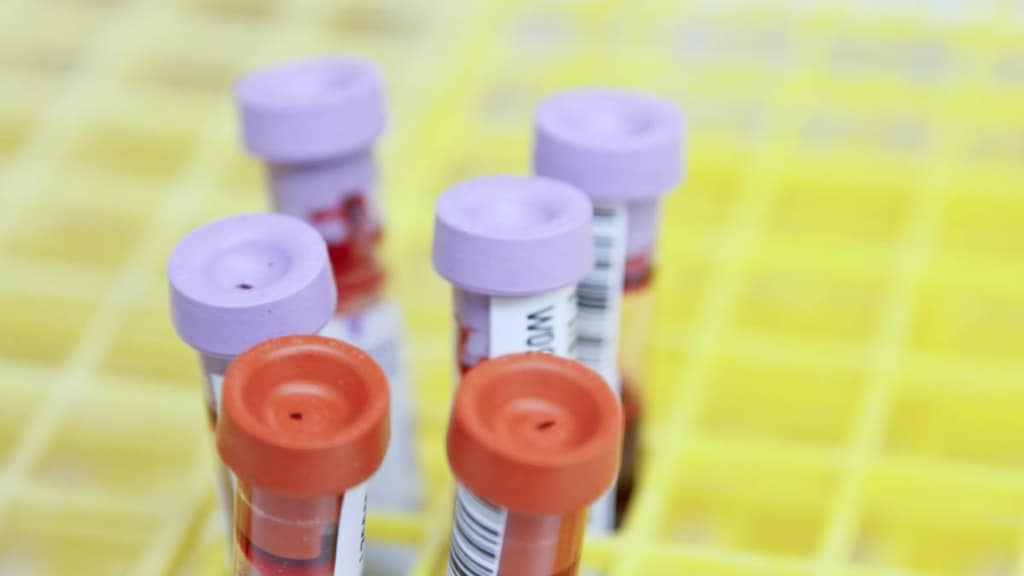What is Plegridy?
- Plegridy is a prescription medicine used to treat relapsing forms of multiple sclerosis (MS), to include clinically isolated syndrome, relapsing-remitting disease, and active secondary progressive disease, in adults.
- It is not known if Plegridy is safe and effective in people under 18 or over 65 years of age.
What is the most important information I should know about Plegridy?
Plegridy can cause serious side effects, including:
- Liver problems or worsening of liver problems, including liver failure and death. Symptoms may include: yellowing of your skin or the white part of your eye, nausea, loss of appetite, tiredness, bleeding more easily than normal, confusion, sleepiness, dark colored urine, and pale stools.
During your treatment with Plegridy you will need to see your healthcare provider and have regular blood tests to check for these possible side effects. - Depression or suicidal thoughts. Symptoms may include: new or worsening depression (feeling hopeless or bad about yourself), thoughts of hurting yourself or suicide, irritability (getting upset easily), nervousness, or new or worsening anxiety.
Call your healthcare provider right away if you have any of the symptoms listed above.
Who should not use Plegridy?
Do not take Plegridy if you:
- are allergic to interferon beta or peginterferon, or any of the other ingredients in Plegridy. See the end of this Medication Guide for a complete list of ingredients in Plegridy.
What should I tell my healthcare provider before using Plegridy?
Before using Plegridy, tell your healthcare provider about all of your medical conditions, including if you:
- are being treated for a mental illness or had treatment in the past for any mental illness, including depression and suicidal behavior.
- have or had liver problems.
- have or had low blood cell counts.
- have or had bleeding problems.
- have or had heart problems.
- have or had seizures (epilepsy).
- have or had thyroid problems.
- have or had any kind of autoimmune disease (where the body's immune system attacks the body's own cells).
- have or had an allergic reaction to rubber or latex. The tip of the cap of the Plegridy prefilled syringe for intramuscular use is made of natural rubber latex.
- are pregnant or plan to become pregnant. It is not known if Plegridy can harm your unborn baby. Tell your healthcare provider if you become pregnant during your treatment with Plegridy.
- are breastfeeding or plan to breastfeed. Plegridy may pass into your breastmilk. Talk to your healthcare provider about the best way to feed your baby if you use Plegridy.
Tell your healthcare provider about all the medicines you take, including prescription and over the counter medicines, vitamins, and herbal supplements.
How should I use Plegridy?
- See the detailed Instructions for Use that come with Plegridy for instructions on how to prepare and inject your dose of Plegridy.
- Use Plegridy exactly as your healthcare provider tells you. A healthcare provider should show you how to inject your Plegridy before you use it for the first time.
- Your healthcare provider will tell you how much Plegridy to inject and how often to inject Plegridy. Do not inject more than your healthcare provider tells you to.
- When you use Plegridy for the first time, your healthcare provider may tell you to slowly increase your dose.
- If you are prescribed Plegridy for injection under the skin (subcutaneous injection):
- you should use a Plegridy Starter Pack to slowly adjust your dose when you begin treatment.
- inject Plegridy under the skin of your stomach (abdomen), back of upper arm, or thigh 1 time every 14 days.
- If you are prescribed Plegridy for injection into the muscle (intramuscular injection):
- you should use a Plegridy Titration Kit to slowly adjust your dose when you begin treatment.
- inject Plegridy into your thigh 1 time every 14 days.
- If your healthcare provider changes where you are injecting Plegridy (under the skin or into the muscle), you do not need to slowly increase your dose again.
- Change (rotate) the site you choose with each injection to help decrease the chance that you will have an injection site reaction. Do not inject into an area of the body where the skin is irritated, reddened, bruised, infected, or scarred in any way.
- After 2 hours check your injection site for redness, pain, itching, swelling, tenderness, a break in your skin that becomes blue and black, or drains fluid. If you have a skin reaction and it does not clear up in a few days, contact your healthcare provider.
- Always use a new, Plegridy prefilled pen or new, unopened single dose prefilled syringe for each injection.
What are the possible side effects of Plegridy?
See “What is the most important information I should know about Plegridy?”
Plegridy may cause serious side effects, including:
- serious allergic reactions. Serious allergic reactions can happen if you take Plegridy. Symptoms may include: itching, swelling of the face, eyes, lips, tongue, or throat, trouble breathing, feeling faint, anxiousness, skin rash, hives, skin bumps. Get emergency help right away if you have any of these symptoms. Talk to your healthcare provider before taking another dose of Plegridy
- injection site reactions. Plegridy may commonly cause redness, pain, itching, or swelling at the place where your injection was given. Call your healthcare provider right away if an injection site becomes swollen and painful or the area looks infected and it does not heal within a few days. You may have a skin infection or an area of severe skin damage (necrosis) requiring treatment by a healthcare provider.
- heart problems, including congestive heart failure. Call your healthcare provider right away if you have worsening symptoms of heart failure such as shortness of breath or swelling of your lower legs or feet while using Plegridy.
- Some people using Plegridy may have other heart problems, including low blood pressure, fast or abnormal heart beat, chest pain, heart attack, or a heart muscle problem (cardiomyopathy).
- blood problems and changes in your blood tests. Plegridy can decrease your white blood cells or platelets, which can cause an increased risk of infection, bleeding, or anemia and can cause changes in your liver function tests. Your healthcare provider will do tests to monitor for side effects while you use Plegridy.
- thrombotic microangiopathy (TMA). TMA is a condition that involves injury to the smallest blood vessels in your body. TMA can also cause injury to your red cells (the cells that carry oxygen to your organs and tissues) and your platelets (cells that help your blood clot) and can sometimes lead to death. Your healthcare provider may tell you to stop taking Plegridy if you develop TMA.
- autoimmune diseases. Problems with easy bleeding or bruising (idiopathic thrombocytopenia), thyroid gland problems (hyperthyroidism and hypothyroidism), and autoimmune hepatitis have happened in some people who use interferon beta.
- seizures. Some people have had seizures while taking Plegridy, including people who have never had seizures before
The most common side effects of Plegridy include:
- flu-like symptoms. Many people who use Plegridy have flu-like symptoms, especially early in the course of therapy. These symptoms are not really the flu. You cannot pass it on to anyone else.
- You may be able to manage these flu-like symptoms by taking over-the-counter pain and fever reducers and drinking plenty of water.
Flu-like symptoms or other common side effects of Plegridy may include: headache, muscle and joint aches, fever, chills, or tiredness.
These are not all the possible side effects of Plegridy.
Call your doctor for medical advice about side effects. You may report side effects to FDA at 1-800-FDA-1088.
General information about the safe and effective use of Plegridy
Medicines are sometimes prescribed for purposes other than those listed in a Medication Guide. Do not use Plegridy for a condition for which it was not prescribed. Do not give Plegridy to other people, even if they have the same symptoms that you have. It may harm them. You can ask your pharmacist or healthcare provider for information about Plegridy that is written for health professionals.
How should I store Plegridy?
Store Plegridy prefilled pens and prefilled syringes in a refrigerator between 2°C to 8°C (36°F to 46°F) in the closed original carton to protect from light until ready for injection. Do not freeze. Discard if frozen.
If refrigeration is unavailable, Plegridy may be stored at room temperature up to 25°C (77°F) for a period up to 30 days, protected from light. Plegridy can be removed from, and returned to, a refrigerator if necessary. The total combined time out of refrigeration should not exceed 30 days.
Plegridy prefilled syringe for intramuscular administration contains natural rubber latex which may cause allergic reactions.
Dispose in a sharps-bin container or other hard plastic or metal sealable container. Always follow local regulations for disposal.
What are the ingredients in Plegridy?
Active ingredient: peginterferon beta-1a
Inactive ingredients:
- Single-dose Prefilled Pen (subcutaneous injection only): L-arginine hydrochloride, glacial acetic acid, polysorbate 20, and sodium acetate trihydrate in sterile water for injection.
- Single-dose Prefilled Syringe (subcutaneous and intramuscular injection): L-arginine hydrochloride, glacial acetic acid, polysorbate 20, and sodium acetate trihydrate in sterile water for injection.
For more information, go to www.plegridy.com or call 1-800-456-2255.





